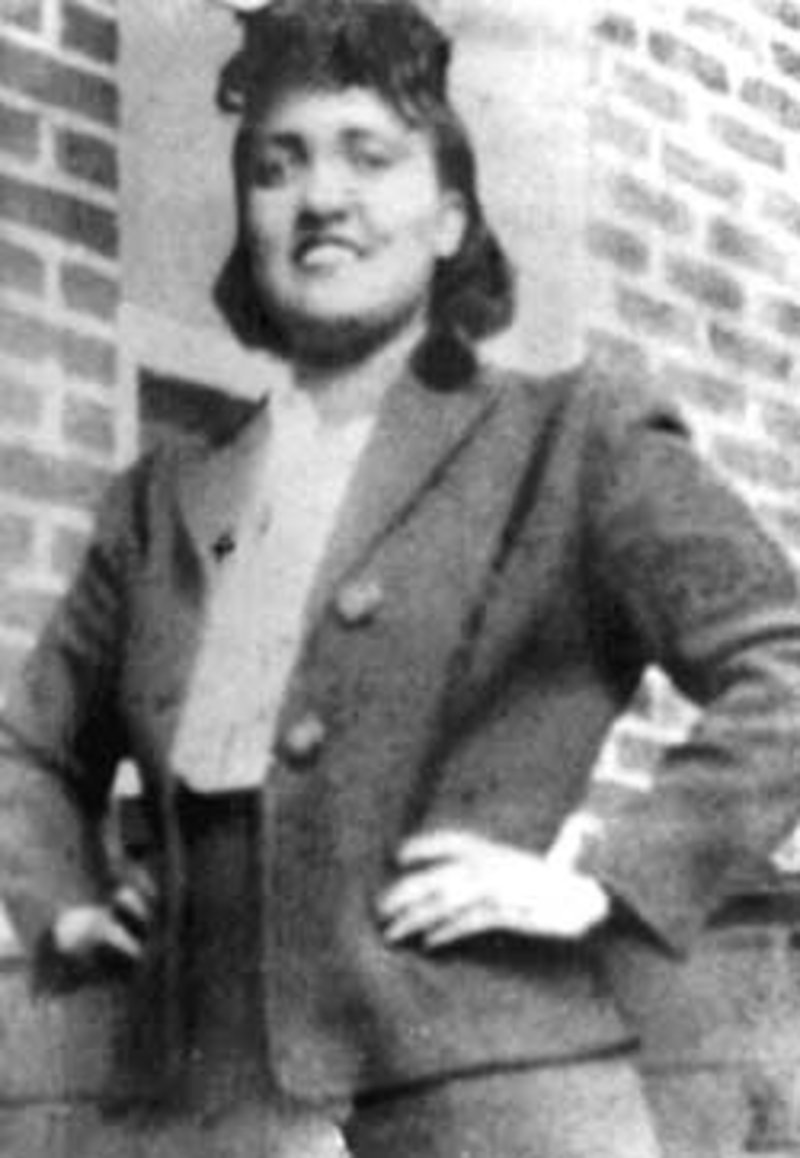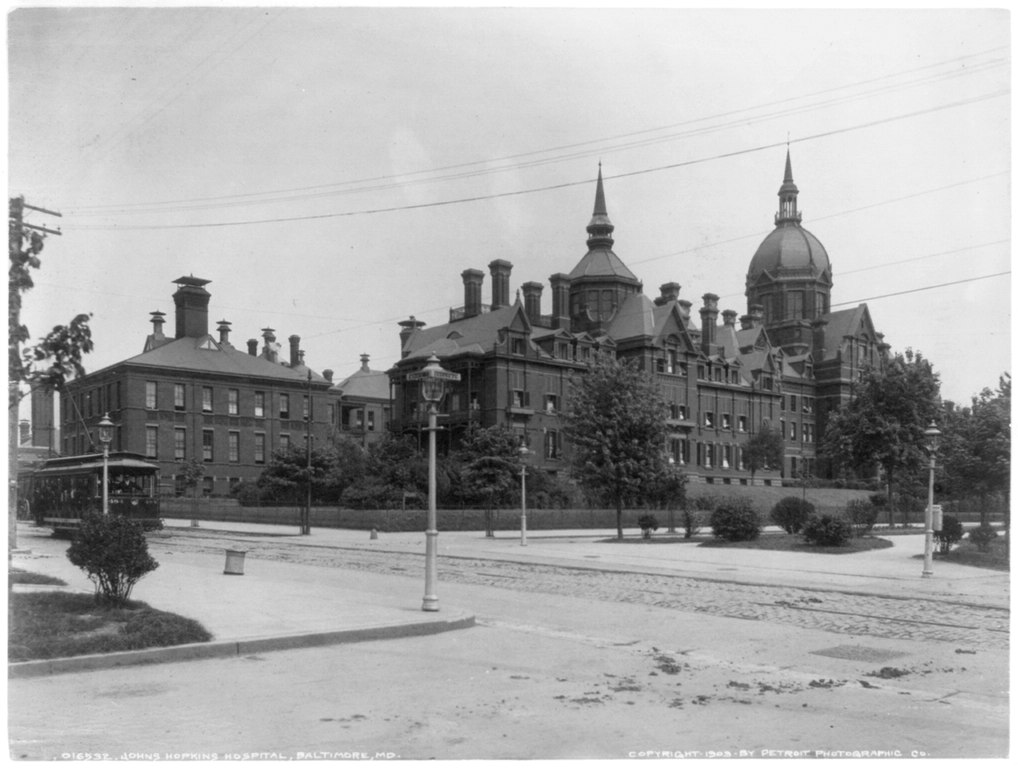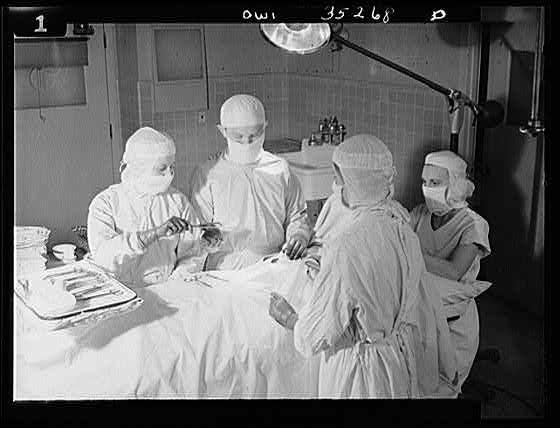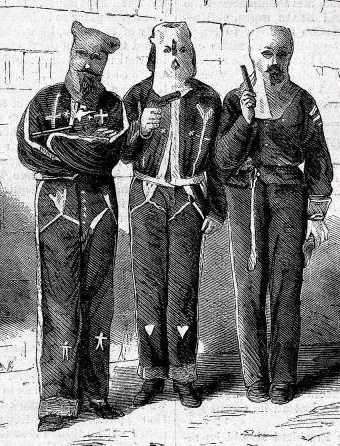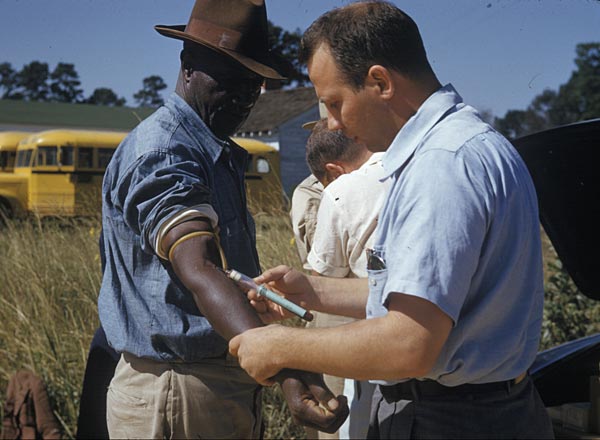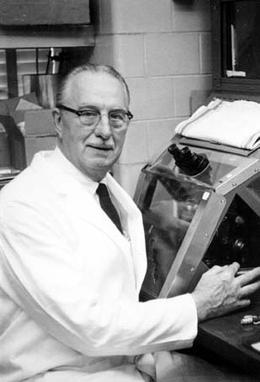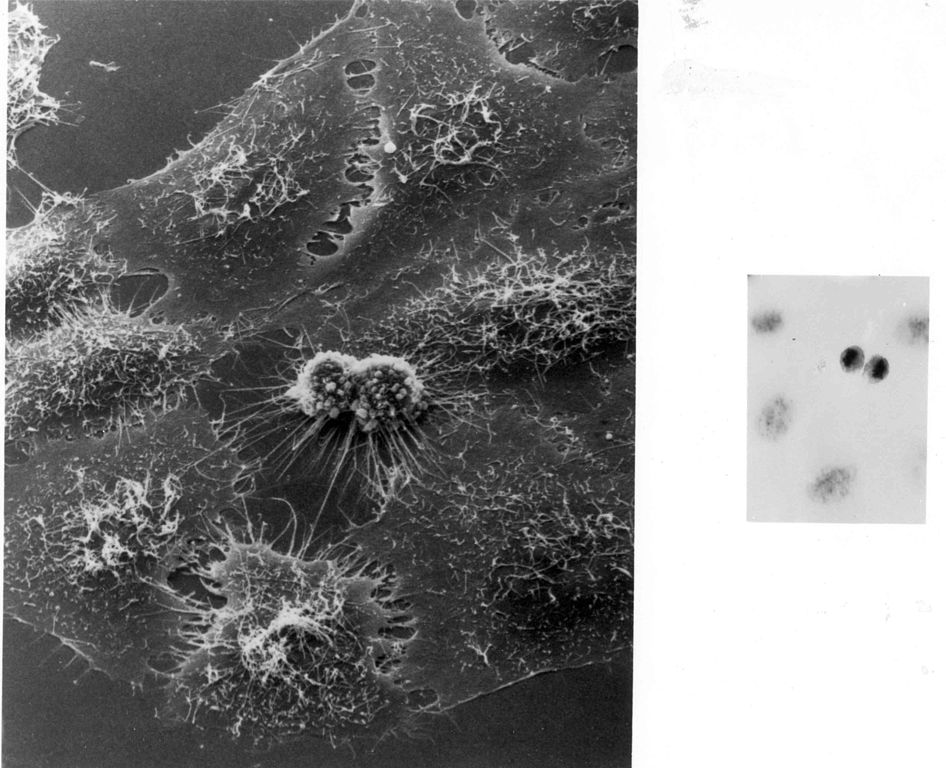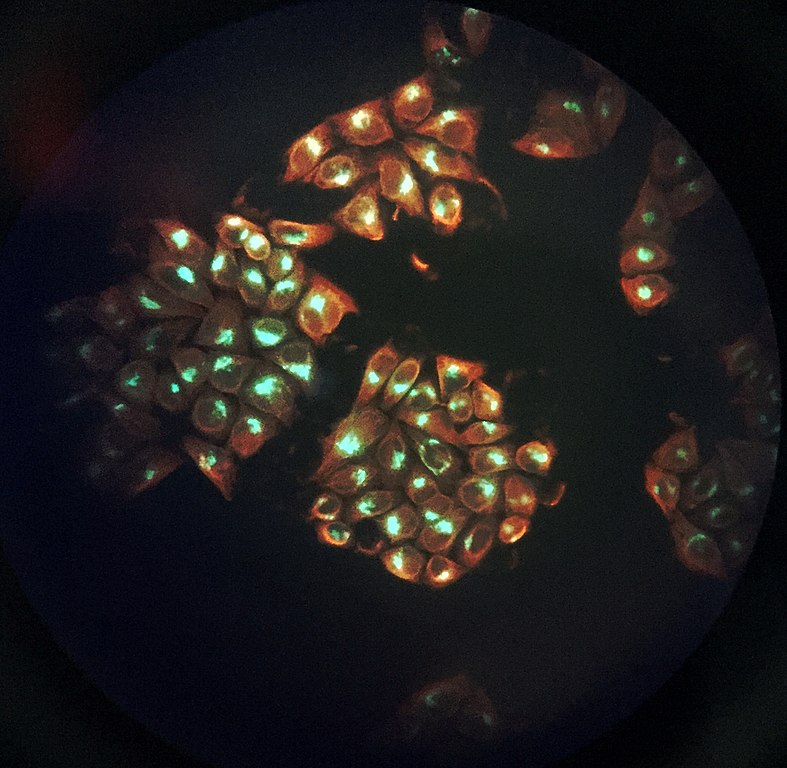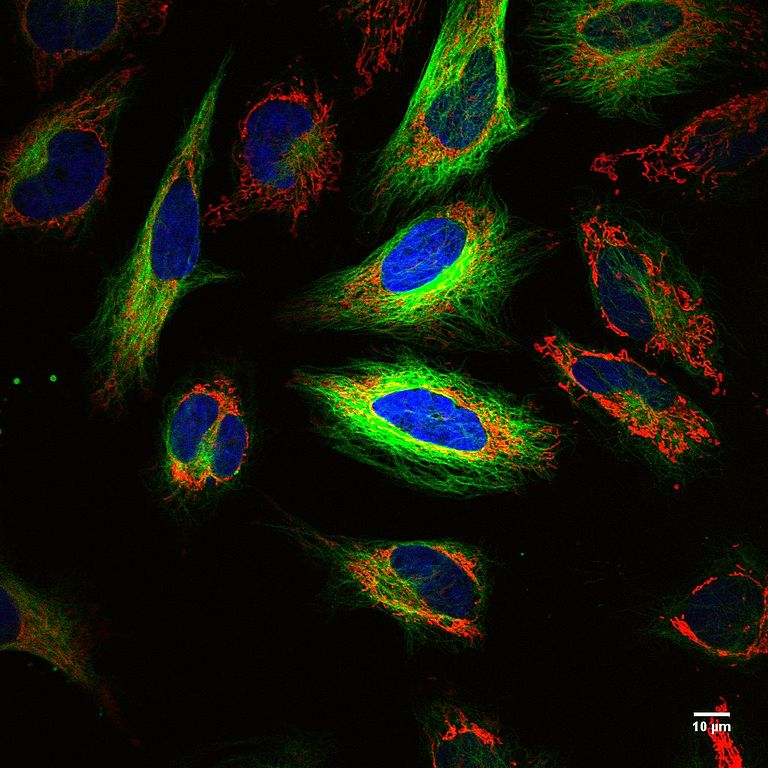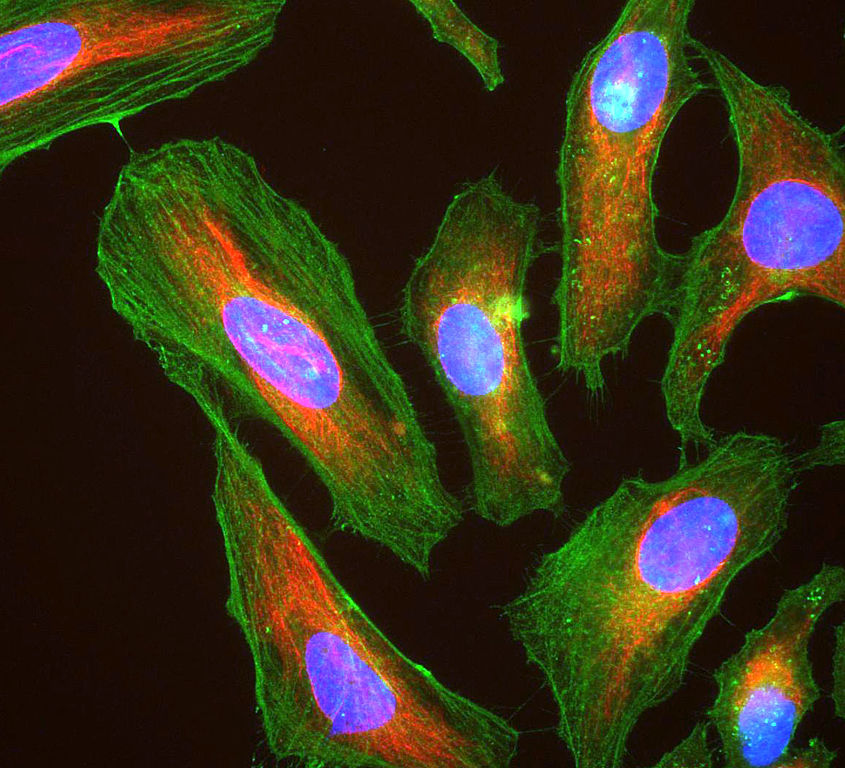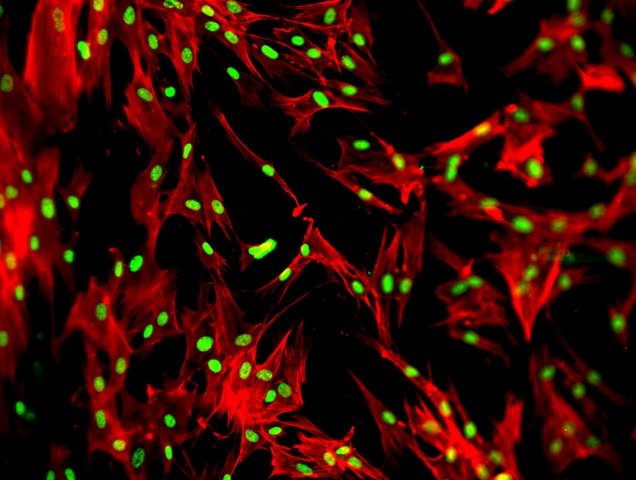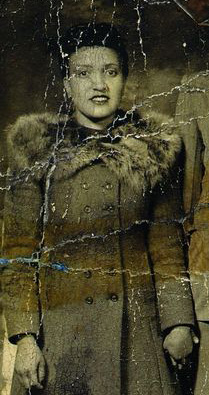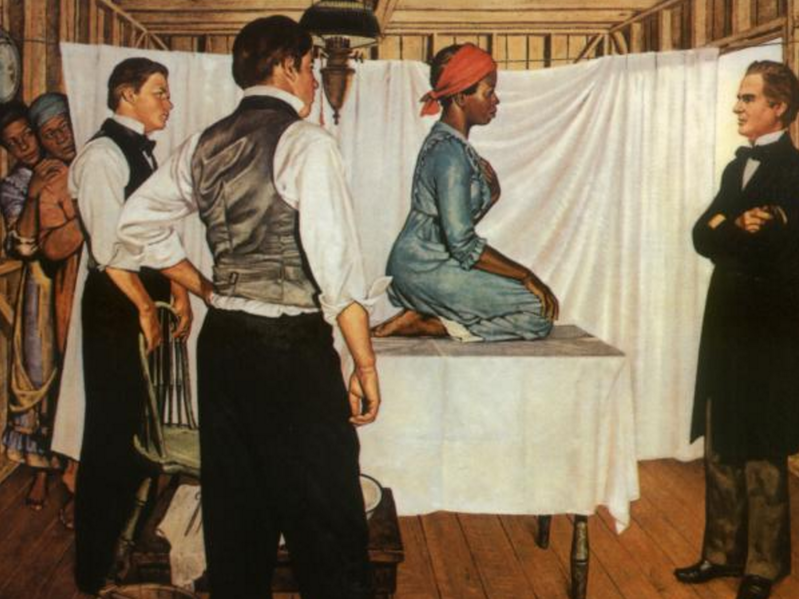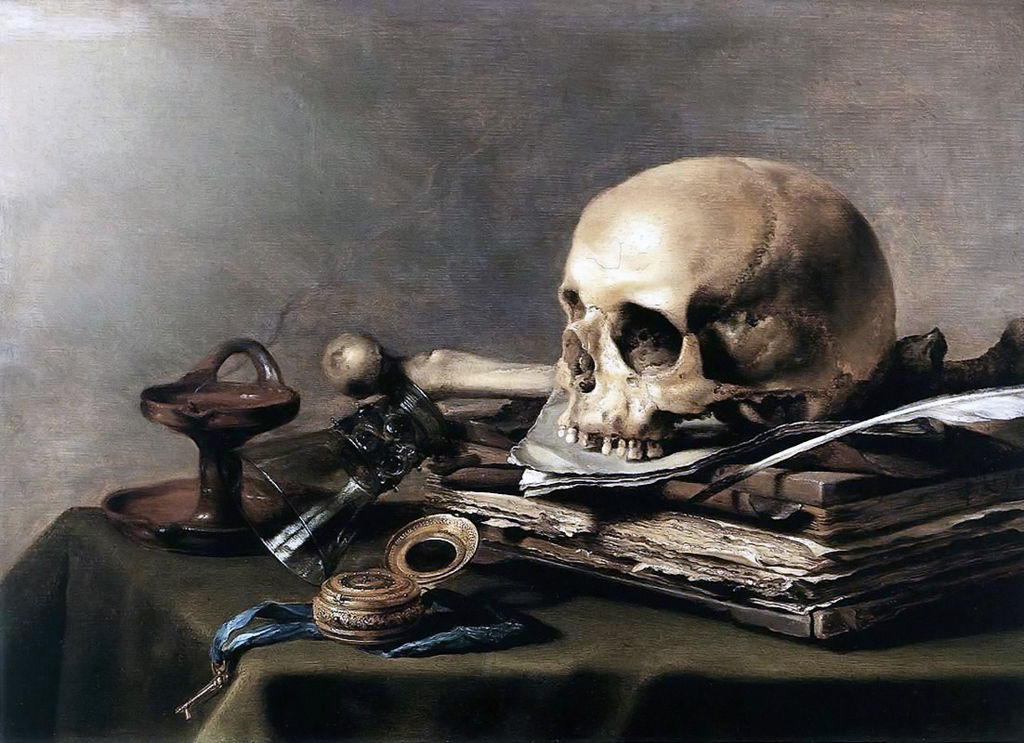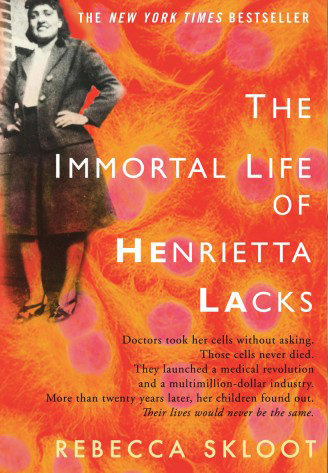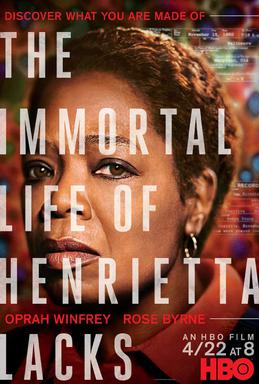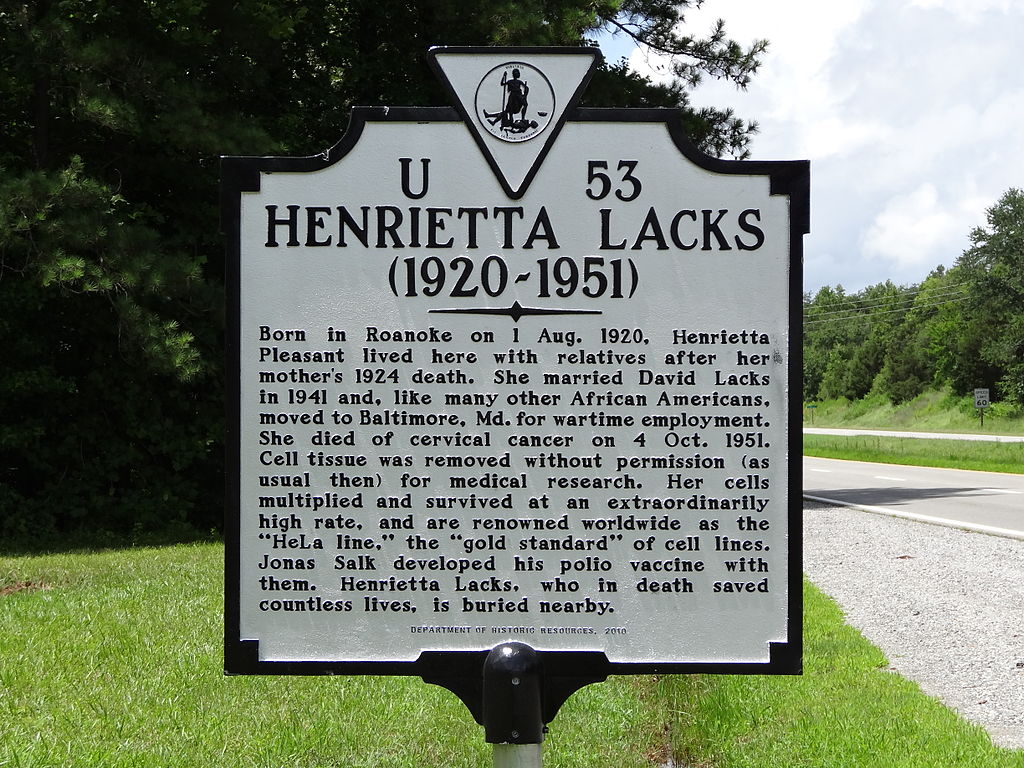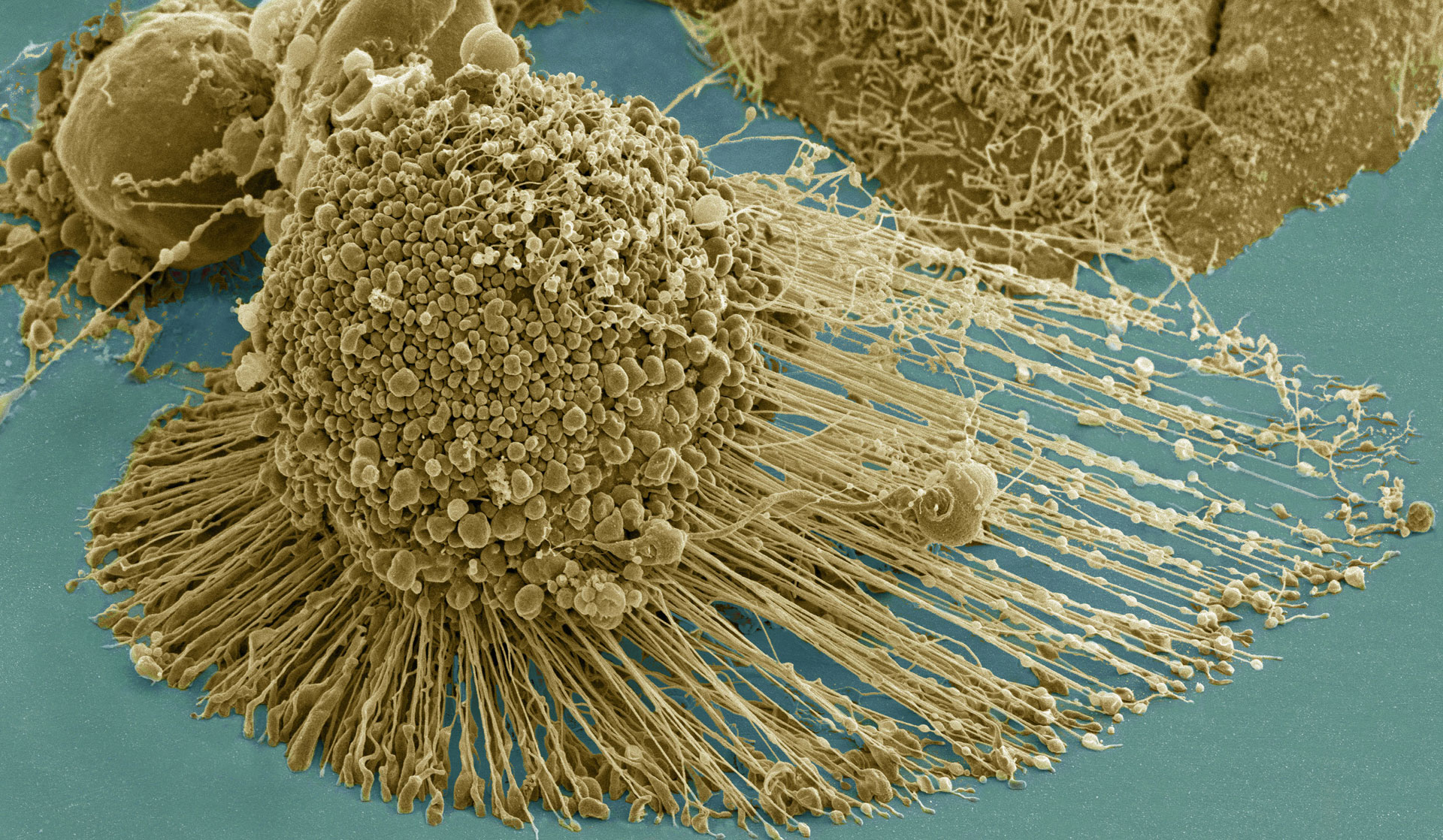
HENRIETTA LACKS & THE HeLa CELLS
January 29, 1951: Scientists are working on the first polio vaccine, old diseases are being treated with new medicines, and in a few years, the first open-heart surgery will take place. A decade of great medical breakthroughs is about to begin. Meanwhile, at Johns Hopkins Hospital in Baltimore, Henrietta Lacks has just been diagnosed with cervical cancer.
Henrietta is from Clover, Virginia, where she grew up in poverty. When she was only 4 her mother died giving birth to her tenth child. She was sent to live with her grandfather in the very same log cabin that had once been her ancestor’s slave quarters. As a young girl, she slept every night on the wooden floor next to her cousin, who would one day be her husband. During the day, she helped her family out by drying and hanging tobacco that was then taken by horse cart to the market. By fourteen she was already a mother. Now at 30 years old, she lives in Turner Station, right by a steel mill town outside of Baltimore where her husband works for $1.40 a day. She stays home to raise their four children.
During the winter of 1950 Henrietta complains to her cousins, Margaret and Sadie, about a knot in her womb. Her cousins think it’s just another pregnancy but Henrietta is not so sure. Despite her extreme reluctance to see a doctor, she finally goes for a visit to the Johns Hopkins Hospital, the only hospital in the area with a ‘colored’ ward to treat black patients.
She is indeed pregnant with her fifth child, Joseph. But the knots don’t go away, and Henrietta’s foreboding intuition continues to grow along with her pain. When Joseph is born, she has a severe hemorrhage that keeps her in the hospital. Sure enough, doctors find a lump growing inside her. Her doctors take a biopsy, shaving off a small piece of her skin to analyze the cells. After testing, the results come back: Henrietta has malignant cancer in her cervix.
Henrietta doesn’t know it, but that biopsy will change the world forever. From it, the first immortal cell line will be made. These cancer cells will go on to create cures, vaccines, medicine, anti-aging solutions and so much more. Her cells, now found in virtually every lab in the world, are called HeLa.
\
BLACK BODIES
Henrietta continues to go back to Johns Hopkins for her radiotherapy treatment, but she’s extremely reluctant. Not just because the treatment is physically brutal on her body, but because the black community has little trust in white doctors. Since the 1800’s black oral history had told of “night doctors”- white doctors that abduct black people for medical experiments. Some of these stories came directly from white plantation owners:
“To discourage slaves from meeting or escaping, slave owners told tales of gruesome research done on black bodies, then covered themselves in white sheets and crept around at night, posing as spirits coming to infect black people with disease or steal them for research. Those sheets eventually gave rise to the white hooded cloaks of the Ku Klux Klan.”
Notwithstanding urban legends, the history of experimentation on black people in the United States is long: the development of a treatment for VVF, human radiation experiments, and, most famously, the Tuskegee Experiment. This experiment was a 40-year medical study where hundreds of black men were denied treatment for their syphilis so that doctors could study its effects. Many of them died thinking they were being helped. It’s no surprise Henrietta had her doubts.
Despite the local rumours of abduction, John Hopkins had a fairly clean record. Its founder, Dr. Hopkins, had expressly established the hospital to take care of patients regardless of colour or creed. But would Henrietta’s treatment have proceeded differently had she been white?
THE MANY LIVES OF HeLa
After Henrietta’s biopsy was taken, her cell culture was handed over to Dr. George Gey. He had been working feverishly to find the recipe to keep human cells alive. He’d bathe them in endless combinations of different chemicals and fluids but nothing seemed to work. To him, Henrietta’s cells would likely be no different; doomed to a few hours of life outside the human body. He named them HeLa, a standard nomenclature for cell cultures based on the patient’s name.
When he came back the next day he found that not only were her cells still alive, they were growing extremely quickly.
When Dr. Gey realized that these cells may very well be the first cells to survive outside of a body he walked to the other end of the hospital to see Henrietta. When he found her, he leaned over her hospital bed and whispered to her:
“Your cells will make you immortal. They will help save the lives of countless people.”
Even though Henrietta’s cells are cancerous they’re still useful. This is because they still behave like normal cells. They produce protein, they communicate with each other, they divide and generate energy, they express genes and regulate them, and they’re susceptible to infections. As long as they continue growing, you can study them endlessly.
After Dr. Gey discovered Henrietta’s cells seemed to survive everything, he began sending them for free to all his colleagues via US mail. Dr. Gey was giving out for free what researchers had spent decades trying to find. As demand skyrocketed, the cells were put into mass production and sent all over the world. HeLa became the first mass produced human life.
But what made her cells so unique? Most cells can only reproduce for so long. After a while, their ability to keep growing slows down, and eventually stops. This is what makes us age. But by an incredible chance, the HPV virus that Henrietta happened to carry in her inserted itself into her genome in such a way as to stop the aging process of the cancer cells. If our cells could reproduce like Henrietta’s we really would be immortal.
By 1960 her cells were everywhere. There were even DIY instructions on how to maintain a culture of them at home in the Scientific American. In fact, they were so good and staying alive that they often contaminated other cell cultures.
“They could travel from one culture to the next on un-washed hands or used pipettes; they could ride from lab to lab on researchers’ coats and shoes, or through ventilation systems. If just one HeLa cell landed in a culture dish, it took over, consuming everything else and filling all the space.”
These were cells that demanded life, demanded their unending spring. To date, they’ve helped produce the polio vaccine, chemotherapy, cloning, gene mapping, and in vitro fertilization. They’re used to test the effects of steroids, hormones, and vitamins. Thousands of scientific papers cite HeLa in their research. A doctor has claimed that if all of her cells in the world right now were gathered onto a scale, they would weigh 50 million metric tons. That’s the mass of one billion people. As if that wasn’t enough, her cells have been travelling to space since the second satellite ever, Korabl-Sputnik 2, first launched in 1960. The researcher Leigh Van Valen even went as far as saying HeLa cells are their own species and has named them Helacyton gartleri.
Shortly after Henrietta’s death, Dr. Gey stood in front of the TV cameras holding up a tube of Henrietta’s cells. He beamed proudly as he announced:
“A new age of medical research has begun--one that, someday, could produce a cure for cancer. It is quite possible that from such fundamental studies such as these that we will be able to learn a way by which cancer can be completely wiped out.”
But what would Henrietta think?
THE TROUBLE WITH CONSENT
Henrietta’s story is one of a miracle breakthrough and life eternal. Conversely, it is a story about consent, privacy and financial benefit. At the time, it was standard procedure to take samples without consent, and the sample taken from Henrietta was done so without her knowledge. Although consent was a non-issue, privacy was still respected. Henrietta’s identity was a long kept secret. Most people thought the HeLa name referred to a Helen Lane. But as the significance of HeLa cells grew, researchers began to wonder what secrets were held in the cells of HeLa’s relatives. Could they also have something to say about immortality?
After Dr. Gey died in 1970, Henrietta’s name began to be published. Soon, her family members became hounded for their blood samples and cell specimens. For 50 years, the family never really new why. No one had bothered to explain the significance of HeLa to them. Meanwhile, her son Lawrence wondered if the immortality of her mom’s cells would mean he would get to live forever too. Eventually they realized the medical world was getting rich off HeLa. Her daughter, Deborah:
“It just kills me to know my mother's cells are all over the world. We never knew they took her cells, and people done got filthy rich, but we don't get a dime.”
Her son, Lawrence:
“Hopkins say they gave them cells away but they made millions! It’s not fair! She’s the most important person in the world and her family living in poverty. If your mother so important to science, why can’t we get health insurance?”
Here again was the age old story of progress built on the backs of the poor and, in this case, their very cells. The reporter Hannah Giorgis extends this to African Americans:
“Medical advancements have come as a direct result of materials or labor forcibly extracted from black bodies. That their families rarely see the fruits of the donors’ sacrifice — and that black people face unique barriers when trying to access health care — compounds the original exploitation.”
Meanwhile, there are 17,000 U.S. patents that involve HeLa cells, which are theoretically continuing to make money. While it seems clear the Lacks family is owed, it’s not so clear by whom. Is it John Hopkins, who never did make money off the cells? The drug companies that do turn a profit? What about scientific researchers that use the cells? Should they first seek the Lack’s family’s permission? Who speaks on behalf of Henrietta when she’s not here to speak?
THE WAY OF THE FLESH
There’s a chance that your cells are currently sitting in some lab or are even being used for cellular research. If you’ve ever had blood samples taken, stool or urine samples, a growth removed, or even taken one of those ancestry tests, your cells may very well be in the hands of researchers. Sometimes, they make a fortune from them. It would be virtually impossible to track your individual cells down, but if you could, you still wouldn’t see a cent. That’s because there are no such things as property rights for organs and tissues.
“What, if anything, is morally or legally due to a person if something of commercial value is developed from their cells is still in question.” - Ruth Faden, Executive Director of the Johns Hopkins Bioethics Institute
Some morgues even have deals with agencies to sell off parts of your body. Your bones are worth about $7,000. Your whole body could go for as high as $100,000. You’re net worth may be a lot higher than you think it is. Once dead, funeral directors can even sell you off to biotech firms that need some extra bits and bobs.
"Doctors perform more than 1 million tissue transplants each year, using everything from second-hand ligaments to hand-me-down heart valves. That fuels a thriving industry composed of tissue banks, biotech firms, and middlemen. Each year the industry takes in an estimated $1 billion in revenue, not a cent of which will go to the families or heirs of the donors who provide the raw material." - American Association of Tissue Banks
This is a market that gives people skin transplants for burns, bones to replace cancerous ones, or tissue transplants for the blind. But it’s also the wholesale commodification of human bodies. Henrietta’s family has been trying for years to receive compensation for what to them has been a historical injustice. Meanwhile, the market for life eternal continues to grow.
In a future where our cells and organs find their way to new hosts, how much of a person must exist for us to say they exist, or that they are living in some sense? Obviously a few cells aren’t enough, but there’s no denying that more than dust to dust remains.
THE FEAR OF DEATH
By all accounts, Henrietta did not go easy into the night. She suffered incredible pains leading up to her death. The ongoing radiation treatment left her body burnt blacker and blacker, and in ever increasing pain. In her file, the doctor notes:
“Patient has been complaining bitterly of pain and she seems genuinely miserable. She groans. She is constantly nauseated and claims she vomits everything she easts. Patient acutely upset…very anxious. As far as I can see we are doing all that can be done.”
While she worked hard to keep appearances with her family, she also suffered from great anxiety. After all, she was only thirty years old. Outside of the hospital though, she managed to push it deep down. In fact, it wasn’t until one month before her death that her family knew she had cancer. Perhaps it was her desire to keep up happy appearances for all those people that depended on her. Perhaps it was plain old wishful thinking, and the anxiety to exclude thoughts of death.
Terror Management Theory suggests there is a basic conflict between our desire for self-preservation and the awareness of our own mortality. This conflict leads to terror, which in turn leads to social strategies to manage that terror. Societies have often simply rejected mortality in favour of the immortality of the soul. Nowadays, symbolic immortality is possible when we become part of something greater than ourselves: the nation, the family lineage, the movement, or the legacy.
In a future of cell banks and organ exchange, can the deconstructed body be our new symbol of immortality? Would the immortality of her cells have given Henrietta some comfort, some idea that she was still alive in some shape or form?
THE IMMORTAL LIFE OF HENRIETTA
It took many years but Henrietta’s legacy has finally been immortalized. She was made famous largely by Rebecca Skloot’s 2010 best-selling book, The Immortal Life of Henrietta Lacks (to which this text owes a great deal). That book is now an assigned reading in hundreds of high schools and medical schools. Oprah Winfrey even made a film about it starring herself. Dozens of talks are held internationally to discuss her contributions. Annual commemoration events take place in the United States, including one at Johns Hopkins. Streets have been named after her, and even a planet. A couple years ago, the New York Times published her obituary as part of their Overlooked project on history’s overlooked women.
“She was buried in an unmarked grave, but the trillions of those cells…are labeled in university labs and biotechnology companies across the world, where they continue to spawn and to play the critical role in a 67-year parade of medical advances.”
Henrietta passes away on her hospital bed on October 4, 1951. Her passing is, perhaps, not complete. The story of HeLa continues. It has been theorized that HeLa may very well hold the key to eternal youth or immortality. Perhaps in the not-too-distant future, we’ll all be applying HeLa serum on our wrinkles, or taking HeLa vaccines to prevent cancer. Then we’ll all be carrying a bit of Henrietta in us.
